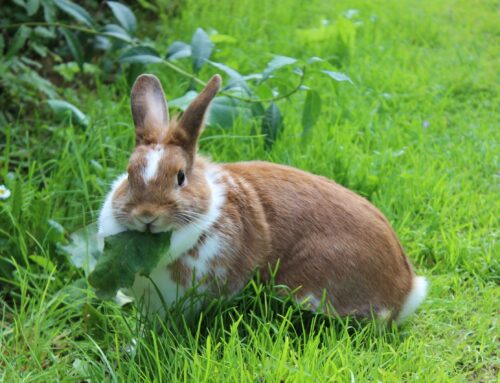“Arthritis” means “inflammation of the joints”; this can be “rheumatoid” (an auto-immune disease, where the body attacks its own joints), or “osteoarthritis”; in this blog, we will be concentrating on the more common form, osteoarthritis.
 Osteoarthritis is a concern for older pets; everyday wear and tear on joints can result in the protective cartilage around joints getting worn away. Normally, joints are lined with smooth cartilage, and have synovial fluid to limit any friction between bones and cartilage as joints move; healthy cartilage and fluid ensures that bones glide over one another where they meet at the joint. In arthritis, this protective cartilage is inflamed and damaged. This results in painful movement; the cartilage protects the bone underneath it, and inflammation and wear-and-tear can result in exposure of the bone beneath. This is painful when the joints then have to function, i.e. when your dog or cat has to walk or run around.
Osteoarthritis is a concern for older pets; everyday wear and tear on joints can result in the protective cartilage around joints getting worn away. Normally, joints are lined with smooth cartilage, and have synovial fluid to limit any friction between bones and cartilage as joints move; healthy cartilage and fluid ensures that bones glide over one another where they meet at the joint. In arthritis, this protective cartilage is inflamed and damaged. This results in painful movement; the cartilage protects the bone underneath it, and inflammation and wear-and-tear can result in exposure of the bone beneath. This is painful when the joints then have to function, i.e. when your dog or cat has to walk or run around.
So, what is arthritis? It is inflammation of the joints. Why does it matter? It matters because it can negatively impact upon your pet’s welfare and quality of life, as it is a painful condition.
How can we tell if our animals are developing arthritis?
- “Signalment”. This is a term used by vets to refer to the age, breed and sex of their patients. Older pets, overweight pets and certain large-breed dogs will be more at risk of osteoarthritis. Certain congenital (from birth) conditions will predispose our pets to the development of arthritis, such as mal-shaped joints, e.g. hip or elbow dysplasia. A history of injury and ligament instability can also predispose to arthritic changes.
- Slowing down. Arthritis is a painful condition; you may notice your pet being less enthusiastic about going out for walks, slowing down on their walks, or even limping if one limb is affected. Stiffness and limping may seem to be worse after long periods of rest, and improve when your pet is active for a while, such as on gentle walks.
- Change in appearance and behaviour. When animals can’t move as comfortably as they used to, they compensate by changing their gait (the way their limb moves). This can result in shorter strides, and atrophy (wastage) of muscles. You may also notice a change in behaviour; pets being uncharacteristically grumpy when lifted or moved can be an indication of pain in the affected limb(s). You may even see your pet licking at certain legs or joints, as a way to cope with the pain. Remember, just because they aren’t crying out or limping, it doesn’t mean that they aren’t in pain!
What can we do to help?
- Notice changes. Is your pet slower, stiffer, grumpier, or looking like (s)he has lost muscle? If so, and if they are older or have a history of injury, it may be time to think about arthritis.
- Diagnosis of arthritis. Your veterinarian will be able to perform a full clinical exam and assess the “range of motion” in your pet’s joints. It is also often valuable to the diagnosis of arthritis to perform an X-ray, to assess the joints themselves. Occasionally, vets will also take a sample of joint fluid.
- Management. Often following a diagnosis of arthritis in our pets, we are keen as owners to give them medicine to get them better. However, management changes can be pivotal in improving your pet’s condition. Sadly, there is no cure for arthritis. However, we can change management to help our beloved pets live long, healthy lives. The following management strategies can help to minimise the negative impacts of this condition and, importantly, slow down its progression:
- Weight loss; arthritis is worse in overweight pets, as their joints are subject to excess stress.
- Controlled exercise; encouraging gentle strengthening of the muscles can help to support the joint. This includes short walks and hydrotherapy.
- Supplements; a range of “nutraceuticals” exist; these are intended to help improve joint health, but are not necessarily veterinary medications as such. These may include glucosamine, chondroitin and hyaluronic acid. This family of drugs act to reduce cartilage degeneration and promote health of the joint fluid.
- Medications. Although arthritis cannot be cured, it can be managed. Lifestyle changes listed above are essential, but your veterinarian will also be able to advise on pain-medication, to ensure your animal still has an excellent quality of life. Pain medications such as “non-steroidal anti-inflammatory” drugs can act as painkillers, however, they do have side-effects, hence the essential factor in management of osteoarthritis is management of your pet’s lifestyle!
Wishing you and your pets a healthy, happy time together!
“When I look into the eyes of an animal I do not see an animal. I see a living being. I see a friend. I feel a soul.” — A.D. Williams



